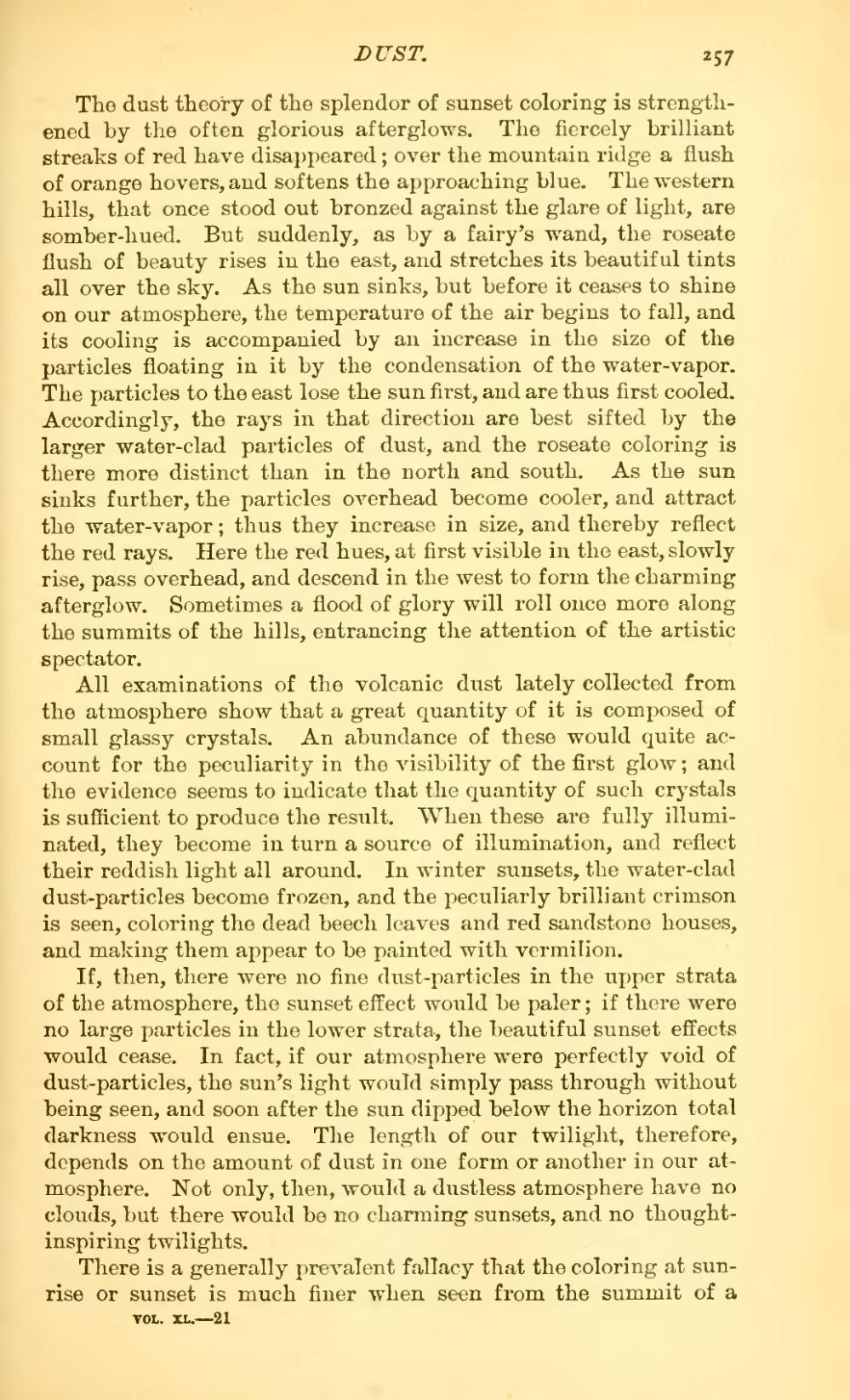The dust theory of the splendor of sunset coloring is strengthened by the often glorious afterglows. The fiercely brilliant streaks of red have disappeared; over the mountain ridge a flush of orange hovers, and softens the approaching blue. The western hills, that once stood out bronzed against the glare of light, are somber-hued. But suddenly, as by a fairy's wand, the roseate flush of beauty rises in the east, and stretches its beautiful tints all over the sky. As the sun sinks, but before it ceases to shine on our atmosphere, the temperature of the air begins to fall, and its cooling is accompanied by an increase in the size of the particles floating in it by the condensation of the water-vapor. The particles to the east lose the sun first, and are thus first cooled. Accordingly, the rays in that direction are best sifted by the larger water-clad particles of dust, and the roseate coloring is there more distinct than in the north and south. As the sun sinks further, the particles overhead become cooler, and attract the water-vapor; thus they increase in size, and thereby reflect the red rays. Here the red hues, at first visible in the east, slowly rise, pass overhead, and descend in the west to form the charming afterglow. Sometimes a flood of glory will roll once more along the summits of the hills, entrancing the attention of the artistic spectator.
All examinations of the volcanic dust lately collected from the atmosphere show that a great quantity of it is composed of small glassy crystals. An abundance of these would quite account for the peculiarity in the visibility of the first glow; and the evidence seems to indicate that the quantity of such crystals is sufficient to produce the result. When these are fully illuminated, they become in turn a source of illumination, and reflect their reddish light all around. In winter sunsets, the water-clad dust-particles become frozen, and the peculiarly brilliant crimson is seen, coloring the dead beech leaves and red sandstone houses, and making them appear to be painted with vermilion.
If, then, there were no fine dust-particles in the upper strata of the atmosphere, the sunset effect would be paler; if there were no large particles in the lower strata., the beautiful sunset effects would cease. In fact, if our atmosphere were perfectly void of dust-particles, the sun's light would simply pass through without being seen, and soon after the sun dipped below the horizon total darkness would ensue. The length of our twilight, therefore, depends on the amount of dust in one form or another in our atmosphere. Not only, then, would a dustless atmosphere have no clouds, but there would be no charming sunsets, and no thoughtinspiring twilights.
There is a generally prevalent fallacy that the coloring at sunrise or sunset is much finer when seen from the summit of a
